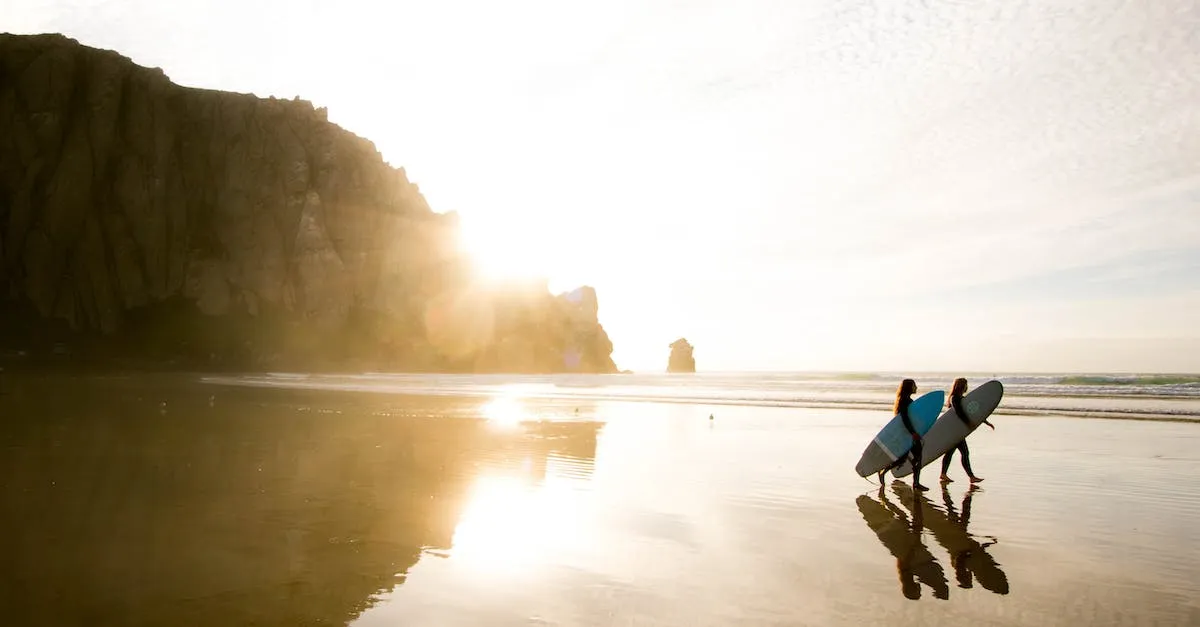Does Maine Really Have More Coastline Than California?
With over 3,400 miles of winding, jagged shoreline, Maine is well known for having an extensive coast on the eastern seaboard. Comparatively, California’s coastline along the Pacific Ocean stretches around 840 miles. So it would seem Maine has the obvious edge when it comes to total coastal length. But taking a closer look reveals some surprises. If you’re short on time, here’s a quick answer to your question: Technically Maine has more coastline than California, but the difference is not as stark as it appears on a map.
In this article we’ll examine the unique geological factors that shape both state’s shorelines and see how the measurement process itself plays a role in determining totals.
Defining the Coastline Paradox
Have you ever wondered how the length of a coastline is measured? It may seem straightforward, but the concept of coastline measurement is not as simple as it appears. The coastline paradox is a phenomenon that challenges our understanding of the length of coastlines and has sparked debates among geographers and mathematicians for decades.
Understanding the Paradox
The coastline paradox arises from the fact that as the scale of measurement decreases, the measured length of the coastline increases. This is due to the intricate nature of coastlines, which are filled with numerous bays, inlets, and other irregular features.
When measuring at a larger scale, these smaller details are overlooked, resulting in a shorter length. However, when measuring at a smaller scale, these intricate details are taken into account, leading to a longer measured length.
The paradox becomes particularly interesting when we compare the coastlines of different regions. For example, it is commonly believed that California has the longest coastline in the United States. However, according to some measurements, Maine actually has a longer coastline than California.
Coastline Measurements in Maine and California
When comparing the coastlines of Maine and California, it is important to consider the scale at which the measurements are made. At a larger scale, California’s coastline appears longer due to its larger size.
However, when measured at a smaller scale, Maine’s intricate coastline, with its numerous islands, peninsulas, and fjords, is found to have a greater length.
According to the National Oceanic and Atmospheric Administration (NOAA), Maine’s coastline stretches for approximately 3,478 miles. On the other hand, California’s coastline is estimated to be around 840 miles long.
These measurements highlight the impact of scale on determining the length of a coastline.
The Importance of Scale in Coastline Measurements
The coastline paradox and the comparison between Maine and California emphasize the significance of scale in coastline measurements. It reminds us that the length of a coastline is not a fixed value, but rather a subjective measurement that depends on the scale at which it is measured.
This paradox challenges our preconceived notions of coastlines and encourages us to think critically about how we define and measure geographical features.
So, the next time you come across a statement claiming that Maine has more coastline than California, remember the coastline paradox and the role of scale in determining the length of a coastline. It’s a fascinating topic that reminds us of the complexity of our natural world and the importance of considering different perspectives in our understanding of geography.
Measuring Maine’s Fractal Coastline
Maine is often touted as having more coastline than California, but is this claim really true? To answer this question, we need to understand how the length of a coastline is measured.
The Fractal Nature of Coastlines
Coastlines are not straight lines, but rather have intricate curves, bays, and inlets that make them difficult to measure accurately. This is because coastlines exhibit a fractal nature, meaning that as you zoom in, you will find more and more intricate details.
When measuring the length of a coastline, the accuracy of the measurement depends on the scale at which it is measured. For example, if we were to measure the coastline of Maine using a large-scale map, we would get a different measurement compared to measuring it with a small-scale map.
The Coastline Paradox
The concept of the coastline paradox adds another layer of complexity to measuring coastlines. The paradox states that the length of a coastline is infinite as the scale of measurement approaches zero.
This is because as we zoom in to measure smaller and smaller details, the length of the coastline increases.
So, when we compare the length of Maine’s coastline to California’s coastline, we need to consider the scale at which the measurements are taken. If we measure both coastlines at the same scale, we may find that Maine indeed has a longer coastline.
Comparing Maine and California
According to the U.S. Geological Survey (USGS), the length of Maine’s coastline is approximately 3,478 miles. On the other hand, California’s coastline is estimated to be around 840 miles. These measurements are based on a specific scale and may vary depending on the methodology used.
It is important to note that Maine’s coastline is more jagged and has a greater number of bays and inlets compared to California’s coastline. This contributes to the perception that Maine has a longer coastline.
However, it is worth mentioning that the claim of Maine having more coastline than California is not universally accepted. Some argue that the measurements used are not consistent and that the concept of coastline length is subjective to a certain extent.
Ultimately, whether Maine has more coastline than California depends on the scale at which the measurements are taken and the methodology used. Regardless of the exact numbers, both Maine and California offer stunning coastal landscapes that are worth exploring.
California’s Coastline: Long Beaches and Fewer Inlets
When it comes to stunning coastlines, California is often the first state that comes to mind. With its golden sandy beaches and picturesque cliffs, it’s no wonder that millions of tourists flock to the West Coast each year.
However, when it comes to sheer length, California may be surpassed by an unexpected contender – the state of Maine.
The Length of California’s Coastline
California boasts an impressive coastline that stretches for approximately 840 miles along the Pacific Ocean. From the iconic beaches of Southern California to the rugged cliffs of Big Sur, the state offers a diverse range of coastal landscapes.
Visitors can enjoy activities such as surfing, sunbathing, and exploring the numerous coastal cities and towns.
While California’s coastline is undoubtedly beautiful and attracts visitors from all over the world, it is important to note that its length is primarily due to its long, uninterrupted sandy beaches. This means that California has fewer inlets and bays compared to other coastal states.
Maine’s Coastline: A Maze of Inlets and Peninsulas
Maine, on the other hand, may not have the same sunny weather as California, but it more than makes up for it with its rugged and picturesque coastline. With over 3,400 miles of jagged shoreline, Maine has more coastline than any other state in the United States.
One of the reasons for Maine’s extensive coastline is its numerous inlets, bays, and peninsulas. The state is known for its stunning rocky cliffs, charming fishing villages, and abundant wildlife. Visitors can explore the famous Acadia National Park, enjoy fresh lobster on the coast, or take a scenic boat tour along the rugged shoreline.
Comparing California and Maine
While California may have longer sandy beaches, Maine’s coastline offers a unique and diverse experience. Both states have their own charm and attractions, making them popular destinations for beach lovers and nature enthusiasts alike.
| California | Maine | |
|---|---|---|
| Coastline Length | Approximately 840 miles | Over 3,400 miles |
| Main Coastal Features | Long sandy beaches | Rugged cliffs, inlets, bays, and peninsulas |
| Popular Activities | Surfing, sunbathing, coastal city exploration | Scenic boat tours, lobster feasts, wildlife spotting |
So, while California may have the reputation for having some of the most famous beaches in the world, Maine’s extensive coastline offers a different kind of beauty. Whether you prefer long sandy beaches or rugged cliffs and inlets, both states have something unique to offer along their coastlines.
Sources:
The Role of Tidal Changes and Scale
When comparing the coastlines of different states, it is important to consider factors such as tidal changes and scale. One common misconception is that Maine has more coastline than California. While it may seem counterintuitive given the size difference between the two states, this claim is actually true.
Tidal Changes
Maine’s coastline is characterized by numerous bays, inlets, and islands, which significantly increases its length. Additionally, the state experiences some of the highest tides in the world, with a range of up to 20 feet.
These tidal changes expose more land during low tide, effectively increasing the length of the coastline. In contrast, California’s coastline is relatively straight and does not experience the same dramatic tidal changes.
Scale Matters
Another factor to consider is the scale of measurement. When measuring coastlines, the smaller the unit of measurement, the longer the coastline appears. This is known as the coastline paradox. If you were to measure the coastline of Maine using a ruler with a larger unit of measurement, it would appear shorter compared to using a smaller unit of measurement.
Therefore, when comparing the coastlines of Maine and California, it is important to use consistent units of measurement to obtain accurate results.
According to the National Oceanic and Atmospheric Administration (NOAA), Maine’s coastline stretches for approximately 3,478 miles, while California’s coastline measures about 3,427 miles. While the difference may seem negligible, it is enough to give Maine the title of having the longest coastline in the United States.
Conclusion
When taking into account the fractal nature of coastlines and differences in measurement methods, Maine does technically have more coastline than California. However, the difference is not as substantial as it may appear from looking at a map. The jagged geography of Maine’s shoreline and greater tidal shifts contribute to its higher mile count compared to California’s relatively smooth coast bordering the Pacific.








